#autosar run time environment
Text
The best AUTOSAR course in Chennai: A Comprehensive Guide 2024.

Many courses that have been the best to date. AUTOSAR embedded courses are one of them used in the automobile industry. The future is in your hands as We are excited to offer “ The Best AutoSAR Course: A Comprehensive Guide 2024”. This blog gives a complete idea of AUTOSAR’s architecture, specifications, and its key components.
Automotive Open Systems Architecture (AUTOSAR) is a development partnership of automotive interested parties founded in 2003. It is focused on creating and establishing an open and standardized software architecture for the automotive electronic control units (ECUs). Goals include scalability to different vehicle and platform variants, transferability of software, consideration of availability and safety requirements, collaboration between various partners, sustainable use of natural resources, and maintainability during the product life cycle.
What is AUTOSAR?
AUTOSAR is a software platform layered with software architecture defined by AUTOSAR used for deeply embedded systems and application software with high requirements for predictability, safety, security, and responsiveness. AUTOSAR distinguishes at the highest level of abstraction between three software layers running a microcontroller. i.e. Application, “Runtime environment(RTE)”, and Basic software(BSW), and provides a modular and scalable approach to software development
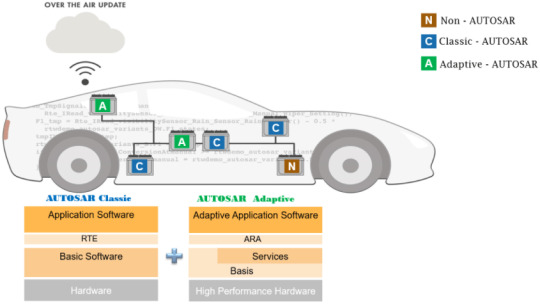
AUTOSAR core set of specifications
AUTOSAR's core set of specifications consists of a standardized framework designed to facilitate the development of automotive systems. Automotive manufacturers and suppliers can streamline development processes, enhance software reusability, and achieve greater flexibility in integrating new functionalities. This approach made collaboration with the automobile industry and enabled the creation of complex, feature-rich vehicle software while maintaining high levels of reliability and maintainability
The key components of AUTOSAR
AUTOSAR components are reusable of the AUTOSAR software. It is a software component that encapsulates one or more algorithms and communicates through well-defined ports. For example, a throttle application might include AUTOSAR software components that represent the sensors for throttle and acceleration for pedal sensors, a throttle position a monitor, a controller, an actuator purpose
The software components present are:
Two throttle position sensors
Throttle position monitor
Acceleration pedal position sensor
Controller
Throttle position actuator
The significance of Autosar architecture
AUTOSAR uses a three-layer architecture
Basic Software:
Standardized software modules (mostly) with no explicit automotive job but offer services needed to run the functional part of the upper software layer
Run Time Environment (RTE) :
The Middle portion had been abstracted from the network topology for the inter and intra-ECU information exchange between the application software components.
Application Layer :
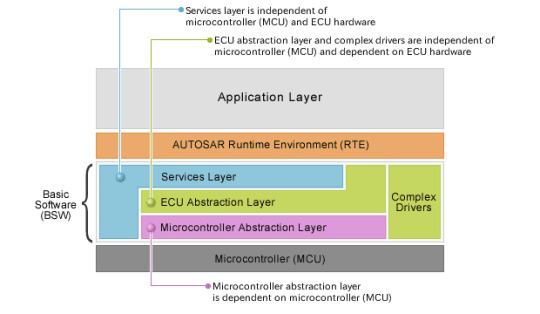
AUTOSAR is designed for reusability:
AUTOSAR is reusable and also enables the reuse of software components across different vehicle models and manufacturers. This reduces the time and cost required to develop new software components from scratch.
For more information check : www.netsuilabs.in
The AUTOSAR PDU( Protocol Data Unit):
To create the level of abstraction for signals from the physical entity of ECU AUTOSAR introduced the concept of AUTOSAR PDU(AUTOSAR Protocol Data Unit). AUTOSAR signals are no longer they are directly mapped to a transmission frame but to technology, agnostic PDUs transported within the frames these PDU can travel across the entire vehicle networks independent of the underlying transmission technologies. For example, if PDUs with the signals resulting from some push button or switches can travel across multiple networks to a central computing platform where necessary actions will be determined
Netusi helps with the AUTOSAR course :

Netsui offers short-term training courses for 2 months. The program is meticulously designed for professionals and enthusiasts seeking to gain profound insights and practical skills in the realm of automotive system architecture (AutoSAR) This specialized course goes beyond foundational principles and moves into advanced concepts and cutting-edge technologies to equip participants with the proficiency needed to architect and develop intricate automotive systems adhering to AutoSAR standards. The Participants will engage in hands-on learning experiences, ensuring that they acquire the expertise in designing and implementing sophisticated AutoSAR-compliant systems for automotive applications.
For more information check : www.netsuilabs.in
Conclusion
In this blog, I conclude what AUTOSAR is significant and the key components of it. Today the major companies are focusing on AUTOSAR, especially the automobile industries. In the future, the selfless driving vehicle is expected in markets like TESLA and other companies. The largest Serbian automotive industry is implementing AUTOSAR in their work and they also tend to develop software solutions. AUTOSAR focused on major safety issues in the future for better driving
So we conclude that AUTOSAR paved the way for innovative electronic systems that further improve, performance, stability, and environmental friendliness
Frequently asked questions(FAQs):
1. Who can benefit from AUTOSAR courses?
AUTOSAR courses are suitable for automotive engineers, software developers, project managers, and anyone interested in working with automotive embedded systems and software development.
2. What topics are covered in AUTOSAR courses?
AUTOSAR courses typically cover topics such as the basics of AUTOSAR architecture, methodology, software component modeling, communication and network management, configuration tools, and hands-on training with AUTOSAR tools and software
3. How long do AUTOSAR courses typically last?
The duration of AUTOSAR courses can vary depending on the level of the course and the depth of content covered. Short introductory courses may last a few days, while more comprehensive programs may span several weeks or months
4. Are there any certification options available for AUTOSAR courses?
Some AUTOSAR courses may offer certification upon successful completion, which can enhance your credentials and career prospects in the automotive industry. Be sure to inquire about certification options when enrolling in a course.
0 notes
Text
AUTOSAR framework
December 6, 2023
by dorleco
with no comment
Control Systems
Edit
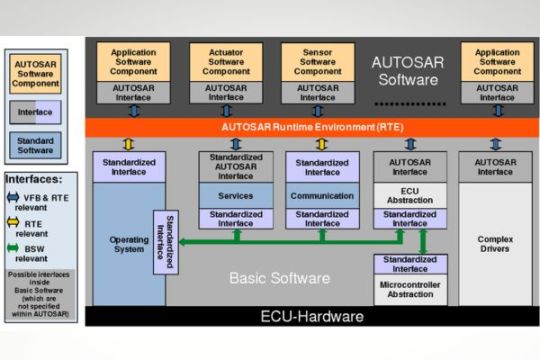
Introduction
The Automotive Open System Architecture, or AUTOSAR for short, is a standardized automotive software architecture designed to make it easier to develop embedded software for automobiles. It was founded as a collaboration between different automakers, suppliers, and other auto-related businesses. AUTOSAR aims to establish a uniform standard for automotive software that will facilitate scalability, reusability, and interoperability across many vehicle domains.
Important characteristics and ideas of the AUTOSAR framework consist of:
Standardized Architecture: The fundamental components, interfaces, and communication protocols for automotive software are outlined in the AUTOSAR software architecture.
Layered Structure: The architecture is divided into the Application Layer, Basic Software Layer, RTE (Run-Time Environment) Layer, and Microcontroller Abstraction Layer, among other layers. Application-specific software can be isolated from the underlying hardware and communication protocols thanks to this tiered structure.
Communication and Network Management: To facilitate communication between various software components inside an automobile’s electronic control units (ECUs), AUTOSAR specifies standardized communication protocols and network management methods. A standardized set of communication services is offered by the Communication Stack (ComStack).
ECU Abstraction: AUTOSAR seeks to abstract the specifics of the hardware, enabling software development independent of the hardware platform or underlying microcontroller. This abstraction makes software components more portable and easier to reuse on many ECUs.
Configuration and Integration: The significance of configuration and integration is emphasized by the AUTOSAR approach. The software components are configured by system designers according to the particular needs of a car, and the required code and configuration files are generated using tools.

Standardized Interfaces: By defining standardized interfaces between software components, AUTOSAR facilitates the simpler integration of disparate vendors’ components. These standards encourage flexibility and interoperability.
Tooling facilitate: A collection of tools that help with configuration, integration, and code generation are available to facilitate AUTOSAR-compliant development. The complexity of the software development process is managed with the use of these tools.
Scalability: Because AUTOSAR is scalable, it may be used with a variety of automotive systems, from high-performance controllers to small, resource-constrained ECUs.
Properties of AUTOSAR framework
Several fundamental characteristics of the AUTOSAR (Automotive Open System Architecture) framework define its methodology for developing automotive software. These characteristics help the framework offer an architecture for embedded systems in cars that is standardized, scalable, and adaptable. The following are some of the AUTOSAR framework’s noteworthy characteristics:
Layered Software Architecture: AUTOSAR has a layered software architecture that is divided into multiple levels, such as the Application Layer, Basic Software Layer, RTE (Run-Time Environment) Layer, and Microcontroller Abstraction Layer. This software’s tiered structure facilitates modularity and portability by dividing and arranging its various components.
Component-Based Development: An approach to component-based development is encouraged by the framework. Because software components are modular and may be created separately, integration, reuse, and maintenance are made simpler.
ECU Abstraction: By hiding the underlying hardware specifics, AUTOSAR enables software components to be written without regard to the particular hardware platform. This abstraction makes software components more portable and easier to reuse on various electronic control units (ECUs) and vehicle platforms.
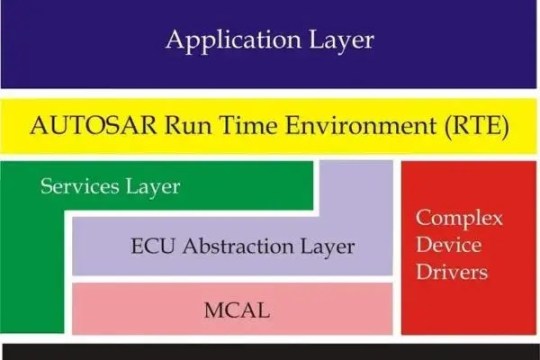
Network Management and Communication: The framework offers a defined communication protocol and network management methods along with a standardized communication stack (ComStack). This guarantees dependable and consistent communication between software elements that are part of the electronic architecture of the car.
Configuration and Integration: AUTOSAR gives configuration and integration a lot of weight. Software components are configured by system designers by vehicle specifications, and tools are used to produce the required code and configuration files. This method improves adaptation and flexibility.
Tooling Support: A collection of tools that help with configuration, integration, and code generation are available to facilitate AUTOSAR-compliant development. These instruments aid in controlling the intricacy of the development procedure and guarantee adherence to the AUTOSAR standard.
Diagnostics and Error Handling: Standardized error handling and diagnostic techniques are part of the framework. This makes it easier to create diagnostic tools and applications, which helps to enhance vehicle upkeep, serviceability, and fault finding.
Flexibility in Component Selection: AUTOSAR facilitates the integration and selection of software components from many vendors with flexibility. This adaptability encourages suppliers to compete and innovate, which eventually helps the automobile sector.
Drawbacks of the AUTOSAR framework
The AUTOSAR (Automotive Open System Architecture) framework includes several difficulties and disadvantages in addition to its many advantages. When determining whether to use AUTOSAR in a particular automotive software development project, it’s critical to take these factors into account. The following are some disadvantages of the AUTOSAR framework:
Complexity: Because of its standardized and layered architecture, AUTOSAR adds a certain amount of complexity. For developers who are unfamiliar with the framework, the learning curve might be steep and the complexity can result in lengthier development times.
Resource Consumption: The defined methodology and layered design of the framework may result in higher memory and processing power usage. For embedded systems with limited resources, this might be problematic, particularly in applications where optimization is essential.
Initial Implementation work: There may be substantial upfront work involved in implementing AUTOSAR in an existing system or in launching a project using AUTOSAR from the ground up. This is especially true for legacy systems that have to have their structure adjusted to fit within the framework.
Limited Real-Time Support: AUTOSAR offers a real-time operating system (RTOS) and tools for managing requirements in real-time, although its adaptability to strict real-time limitations may be less than that of certain proprietary solutions. Applications that are strictly time-sensitive and safety-critical may find this limitation concerning.
Tooling and Compatibility: It can be difficult to find and use compatible development tools. It’s possible that some tools won’t support the most recent AUTOSAR specifications, and there can be compatibility problems when combining tools from different providers.
Large Overhead for Small Projects: For straightforward applications or tiny projects, the framework may add a considerable amount of overhead. In some situations, the extra complexity and development work might not be justified by the advantages of standardization and scalability.
Limited Flexibility: Although AUTOSAR encourages uniformity, this may also impose restrictions on flexibility, particularly for developers used to more adaptable, non-standardized methods. Certain specialized or non-traditional applications might not be appropriate for the stringent constraints of the framework.
Dependency on Ecosystem: An established ecosystem of vendors, resources, and standard-abiding developers is essential to AUTOSAR’s success. Reliances in this ecosystem could be dangerous, particularly if its evolution diverges from the requirements of a particular project.
Steep Learning Curve: For developers who are unfamiliar with the AUTOSAR framework, the intricacy of the system and the concepts that go along with it may mean a high learning curve. It can take a while to become proficient in AUTOSAR through training.
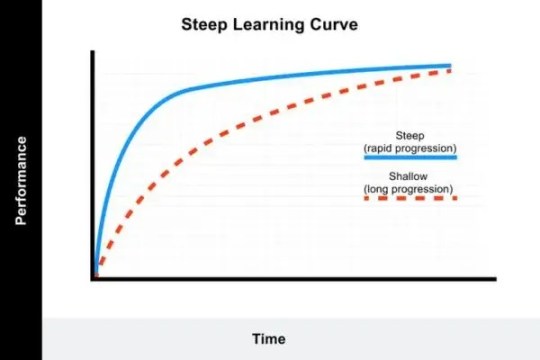
Increased Overhead for Small-Scale Projects: In small-scale projects or those with a low level of software complexity, AUTOSAR’s overhead may be greater than its advantages. It could be difficult for smaller teams to justify the expense of implementing the entire AUTOSAR specification.
Conclusion:
In conclusion, the AUTOSAR (Automotive Open System Architecture) framework has emerged as a significant standard in the automotive industry, providing a systematic and standardized approach to developing embedded software for vehicles. While AUTOSAR offers several notable advantages, such as standardization, interoperability, and scalability, it is essential to acknowledge its associated complexities and challenges.
The framework’s layered architecture, component-based development, and emphasis on configuration and integration contribute to the creation of modular, reusable software components. This, in turn, fosters collaboration among different stakeholders in the automotive ecosystem, including manufacturers, suppliers, and developers. The standardization of interfaces and communication protocols enhances interoperability, allowing for more flexibility in selecting and integrating components from different sources.
However, the adoption of AUTOSAR comes with certain drawbacks. The framework’s complexity, resource consumption, and potential overhead for smaller projects or simpler applications can pose challenges. Developers may face a learning curve, and the tooling ecosystem may not always provide seamless compatibility.
In deciding whether to use AUTOSAR, project teams must carefully weigh the benefits against the drawbacks. For large-scale projects with complex software requirements and a need for standardization and scalability, AUTOSAR can offer significant advantages. On the other hand, for smaller projects with less stringent requirements or for those where flexibility is a higher priority, alternative approaches may be more suitable.
The ongoing evolution of the AUTOSAR standard, with updates and improvements, underscores its adaptability to the changing landscape of the automotive industry. As the ecosystem around AUTOSAR continues to mature, addressing challenges and refining tooling support, the framework is likely to play a crucial role in shaping the future of automotive software development. Ultimately, the decision to adopt AUTOSAR should be based on a thorough assessment of project needs, resources, and the specific advantages and trade-offs associated with the framework.
#microcontrollers#microprocessors#Automotive#technology#ECUs#GPS#Dorleco#computervision#Autonomousvehicles#selfdrivingcars#CAN
0 notes
Link
#autosar#autosar_tutorials#automotive software development#automotive#autosar basics#embedded systems#autosar run time environment#AUTOSAR RTE Layer
0 notes
Text
Classic AUTOSAR and Adaptive AUTOSAR Design Services
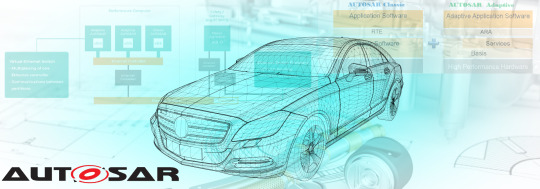
AUTOSAR or Automotive Open System Architecture is a systematized automotive software architecture, which keeps order in interfaces between application software and basic vehicular functions and it aids in creating common ECU software architecture for all the AUTOSAR members.
AUTOSAR is expected to dispense intrinsic advantages to the members to control gradually more complex E/E in-vehicle environments like simple incorporation and exchange of functions in complex ECU networks and control over the entire product lifecycle.
The AUTOSAR standard defines variations of the software architecture called AUTOSAR platforms: Classic AUTOSAR Platform and Adaptive AUTOSAR Platform.
AUTOSAR Architecture
AUTOSAR is a growing and evolving standard that defines a layered architecture for the software. The classic AUTOSAR platform runs on a microcontroller and is divided into 3 main layers
Basic Software Architecture (which is common for any AUTOSAR ECU and runs on a Microcontroller)
AUTOSAR Runtime Environment Layer (RTE Layer)
Application Layer
Basic Software Architecture (which is common for any AUTOSAR ECU and runs on a Microcontroller)
AUTOSAR Runtime Environment Layer (RTE Layer)
Application Layer
The AUTOSAR Basic Software (BSW) is further divided into three layers:
1. Services Layer,
2. ECU Abstraction Layer,
3. Microcontroller Abstraction Layer (MCAL)

1. Services Layer
The service layer is the topmost layer of AUTOSAR Basic Software Architecture.
The service layer propounds
An operating system, which runs functionally from the application layer to the microcontroller at the bottom.
Vehicle network communication and management services
Diagnostic Services (Unified Diagnostic Services, Error handling and Memory)
Memory services (Non Volatile RAM)
ECU state management
Logical and temporal program flow monitoring
An operating system, which runs functionally from the application layer to the microcontroller at the bottom.
Vehicle network communication and management services
Diagnostic Services (Unified Diagnostic Services, Error handling, and Memory)
Memory services (Non-Volatile RAM)
ECU state management
Logical and temporal program flow monitoring
2. ECU Abstraction Layer
ECU Abstraction Layer l and its drivers are independent of the microcontroller and dependent on the ECU and interface the drivers of the Microcontroller Abstraction Layer (MCAL).
ECU Abstraction propounds
Access to all the peripherals and devices of ECU, which supports functionalities like communication, memory, I/O, etc.
3. Microcontroller Abstraction Layer (MCAL)
The Microcontroller Abstraction Layer (MCAL) also known as a hardware abstraction layer is the lowest layer of the Basic Software.
MCAL contains internal drivers which are software modules that are direct access to the µC and integrated with the microcontroller through registers and offers drivers like system drivers, diagnostics drivers, memory drivers, communication drivers (CAN, LIN, Ethernet, etc.), I/O drivers, and more.
RTE Layer
RTE Layer is a middleware layer of the AUTOSAR software architecture between the BSW and the application layer and provides communication services to the application software for example AUTOSAR Software Components and/or AUTOSAR Sensor/Actuator components.
Application layer
The application layer is the topmost layer of the AUTOSAR software architecture and supports custom functionalities implementation. This layer consists of the specific software components and many applications, which are a group of interconnected AUTOSAR Software Components and perform specific tasks as per instructions.
The AUTOSAR application layer consists of three components which are: application software components, ports of software components, and port interfaces. Depending on the requirements of the application an AUTOSAR Software Component might be a small, reusable piece of functionality such as lane-keeping assistance, Wiper Control, Automatic door unlocks, etc.
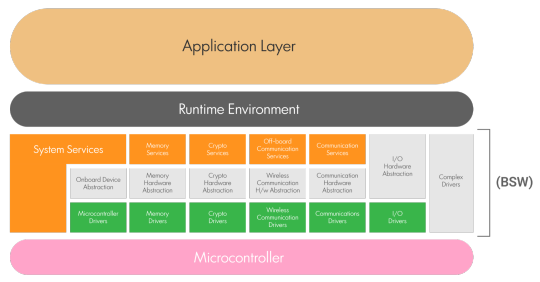
AUTOSAR Services by Faststream Technologies
Faststream Technologies partnering with AUTOSAR helps the automotive OEMs and tier 1 suppliers in many AUTOSAR related solutions like development, integration, and validation of AUTOSAR basic software modules. We integrate the AUTOSAR stack software from tool suppliers and upgrade platform software to new AUTOSAR versions as per specifications and more.
Classic AUTOSAR
Implementation of our Classic AUTOSAR basic Software:
Highlights
• Efficient and scalable AUTOSAR-compliant and OSEK/VDX compliant products for ECUs
• Full AUTOSAR support with one basic software stack, and one tool environment
• Safe and ready for series production
• Single-/multi-core operating systems
• Tailor-made products, services, and support Benefits
• Highest safety levels
• Time and cost savings through reusable software functions
• Safe, and reliable mass production-ready software
Benefits
• Highest safety levels
• Time and cost savings through reusable software functions
• Safe, and reliable mass production-ready software
Adaptive AUTOSAR
Our Product Line
AdaptiveCore
An adaptive platform for safe and secure applications
Hypervisor
Micro-kernel-based hypervisor to run multiple (different) operating systems on one single CPU Adaptive platform for safe and secure applications
Linux
Container-based Linux distribution
Faststream’s solution
Integrated development environment for the AUTOSAR products
Faststream’s Software infrastructure for high-performance controller
Highlights
• Applicable for all domains: infotainment, highly automated driving, etc.
• Modular architecture, flexible configuration of building blocks
• Possibility to add new functions through updates
• Hardware agnostic (ARM, Intel, NVIDIA, etc.)
• Adaptive AUTOSAR based software stack
Benefits
• One-stop-solution for safe and secure high-performance computing
• Pre-integrated software modules save time and costs
• Prepared for operations of software infrastructure for 5+ years
#autosar#fleet management system#fleet management software#fleet management solution#adaptive autosar#classic autosar#automobiles
0 notes
Text
Embedded Hypervisor Market - Efficient Utilisation of Hardware and Software Components in a Virtual Environment has Triggered the Demand
The global embedded hypervisor market is expected to witness gradual growth throughout the period of forecast. This growth can be attributed to rising demand for lower costs of production through hardware consolidation with security. The global embedded hypervisor market is projected to grow at a CAGR of 5.1% during the assessment period, to reflect a 1.6x increase in value from 2017-2027. US$ 3.9 Bn is the global embedded hypervisor market standing in 2017 and it is estimated to reach an evaluation of about US$ 6.4 Bn by 2027. The global market has gained a lot of traction post 2012-2016 period; its growth rate has significantly improved since this timeline.
Brows Research Report @
https://www.futuremarketinsights.com/reports/embedded-hypervisor-market
Lucrative market opportunities for embedded hypervisors
Rise in automotive sector and increasing adoption of RTOS (Real-Time Operating System) has presented a huge opportunity for the growth of embedded hypervisors as compared to Linux containerization.
Advancements in electronic systems and increasing number of automotive embedded software applications and their complex nature have compelled automotive enterprises to invest in embedded hypervisors. In automobiles, hypervisors are primarily adopted to allow different parts of electronic systems to be combined into a smaller number of ECUs and software convergence on operating systems such as AUTOSAR and Linux. This results in increased safety and security with better reliability in cars which is the main reason for increasing spending on embedded hypervisors in the automotive domain.
Likewise, in enterprises, RTOS is widely adopted as there is a need to run real-time applications. RTOS provide low level real-time functionality and simultaneously runs a general purpose OS such as Linux or Windows to support user applications by creating a virtual machine with the help of embedded hypervisor. This reduces operational costs and complexity. The adoption of real-time operating systems for real-time applications in enterprises fuels demand for embedded hypervisors.
Get an exclusive sample of this report @
https://www.futuremarketinsights.com/reports/sample/rep-gb-2190
Consumer electronics to show significant growth during the period of assessment
The consumer electronics segment by application is anticipated to grow at the highest rate throughout the period of assessment 2017-2027, to register a CAGR of 5.5%. During the assessment period, this segment is estimated to reflect high value of around US$ 2 Bn by the end of 2027, thus dominating the global embedded hypervisor market by application. This segment shows a high market share index of 5.0 during the assessment period.
Aerospace and defence and automotive segments to reflect noteworthy statistics
By application, aerospace and defence segment, after consumer electronics, is anticipated to grow at a 5.4% CAGR to reach an evaluation of about US$ 1.1 Bn in 2027. The automotive segment also shows significant market value by 2027 end, and is poised to grow at a similar growth rate. Both these segments are experiencing good growth index during 2017-2027 period and show similar statistics. It would be wise considering these two segments as good investment options. Medical devices segment is also a high growth segment but with a comparatively low market value.
Embedded hypervisor market application scenario across important regions
In North America, BFSI segment is expected to grow at the highest rate, a shade higher than consumer electronics, followed by automotive, industrial automation and defence and aerospace segments respectively. However, consumer electronics segment leads with respect to market value. In Asia Pacific excluding Japan and Japan, the consumer electronics segment is poised to show high growth rate and value by 2027. Automotive application segment in Middle East and Africa region is anticipated to grow at the highest rate to reflect a CAGR of 3.77% during the forecast period. To infer, consumer electronics segment is high growing segment with significant value across North America, Latin America, Western and Eastern Europe, Japan, APEJ, and MEA.
0 notes